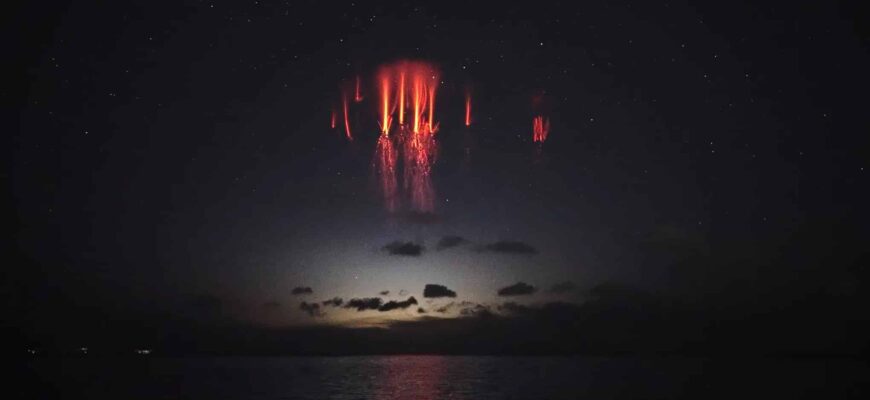The view from the International Space Station (ISS) offers unparalleled perspectives on our planet`s dynamic systems. While orbiting high above Earth, astronauts frequently witness natural phenomena invisible or only rarely seen from the surface. Recently, NASA astronaut Nicole Ayers captured a particularly stunning example: a vast atmospheric electrical discharge known as a “sprite“.
Sharing the remarkable photograph, which was taken over Mexico and the USA, Ayers expressed her awe, stating, “Just wow. When we were flying over Mexico and the USA this morning, I captured this sprite.” The image depicts a striking red structure towering above the clouds of a thunderstorm, a testament to the power and complexity of Earth`s atmosphere.
Such photographs are not merely aesthetically pleasing; they serve a crucial scientific purpose. By capturing these elusive events from orbit, astronauts like Ayers provide researchers with valuable data that helps illuminate the connections between violent thunderstorms originating in the troposphere and the electrical environment of the upper atmosphere.
Unpacking the Mystery: What are Sprites?
While they occur in conjunction with thunderstorms, sprites are distinctly different from typical lightning. They belong to a category of phenomena called Transient Luminous Events (TLEs) – spectacular, short-lived flashes or glows that occur high above thunderclouds, in the mesosphere, approximately 50 to 80 kilometers (about 30 to 50 miles) above the ground.
Unlike lightning, which is a hot electrical discharge that heats the air intensely, sprites are considered discharges of cold plasma. Think of them less like a bolt of lightning and more like the glow produced by a fluorescent light tube, albeit on a colossal scale. They typically appear just milliseconds after a particularly powerful positive ground strike from a thunderstorm below.
Their transient nature makes them difficult to observe. However, when they do occur, they are immense, capable of stretching up to 60 kilometers (around 37 miles) vertically and expanding horizontally over diameters exceeding 100 kilometers (more than 60 miles). They propagate both upwards and downwards at incredible speeds.
For observers on the ground, far from interfering city lights, sprites can sometimes be spotted as fleeting, reddish flashes high above distant storms. Their unusual, often complex shapes have occasionally led to misidentification as unexplained aerial phenomena. *Because, naturally, any strange light in the sky must be extraterrestrial visitors, rather than poorly understood terrestrial physics.*
Sprites are sometimes accompanied by other TLEs, such as ELVES (Emissions of Light and Very Low Frequency Perturbations due to Electromagnetic Pulse Sources). ELVES manifest as rapidly expanding rings or halos of red light, forming even higher up, at the boundary between the mesosphere and the ionosphere. These halos can spread across hundreds of kilometers.
The ongoing study of sprites, ELVES, and other TLEs is vital for understanding the electrical coupling between the lower and upper atmosphere. Observing these events from space provides a unique vantage point to measure their properties and understand their influence on atmospheric chemistry and electrical conductivity, contributing to a more complete picture of our planet`s dynamic environment.







